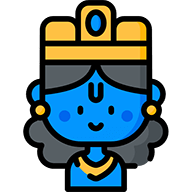Mock sample for your project: Bhagavad Gita API
Integrate with "Bhagavad Gita API" from bhagavadgita.io in no time with Mockoon's ready to use mock sample

Bhagavad Gita API
bhagavadgita.io
Version: 1.0
Speed up your application development by using "Bhagavad Gita API" ready-to-use mock sample. Mocking this API will allow you to start working in no time. No more accounts to create, API keys to provision, accesses to configure, unplanned downtime, just work.
It also improves your integration tests' quality and reliability by accounting for random failures, slow response time, etc.
Description
Other APIs in the same category
House of Commons Oral and Written Questions API
An API that allows querying all tabled oral and written questions, and motions for the House of Commons.
Department of Legal Metrology, Uttar Pradesh
apisetu.gov.in
Licenses issued by Department of Legal Metrology, Uttar Pradesh can be pulled by citizens into their DigiLocker accounts.
Reliance General Insurance Company Ltd
apisetu.gov.in
Insurance policies issued by Reliance General Insurance Company Limited is available on DigiLocker at (https://www.reliancegeneral.co.in) can be fetched by Citizens into their DigiLocker accounts
Kotak Mahindra General Insurance Company Ltd.
apisetu.gov.in
Insurance Policies such as Health, Car, Two Wheeler, Group, Home etc. issued by KOTAK MAHINDRA GENERAL INSURANCE are available to be pulled by citizens.
Transport Department, Arunachal Pradesh
apisetu.gov.in
Driving License (DL) and Vehicle Registration Certificate (RC) of the State, as available on Parivahan Sewa (http://parivahan.co.in/) of Ministry of Road Transport and Highways, are available on DigiLocker. Citizens can pull these documents into their DigiLocker accounts.
Maharashtra Council of Indian Medicine
apisetu.gov.in
APIs provided by Maharashtra Council of Indian Medicine.
AIIMS Rishikesh
apisetu.gov.in
Degree certificates issued by AIIMS Rishikesh in year 2018 can be pulled by students into their DigiLocker accounts
Transport Department, Meghalaya
apisetu.gov.in
Driving License (DL) and Vehicle Registration Certificate (RC) of the State, as available on Parivahan Sewa (http://parivahan.co.in/) of Ministry of Road Transport and Highways, are available on DigiLocker. Citizens can pull these documents into their DigiLocker accounts.
Food and Supplies Department, Haryana
apisetu.gov.in
Ration Cards issued by Food & Supplies Department, Haryana (http://haryanafood.gov.in/) are available for download on DigiLocker.
Transport Department, Jharkhand
apisetu.gov.in
Driving License (DL) and Vehicle Registration Certificate (RC) of the State, as available on Parivahan Sewa (http://parivahan.co.in/) of Ministry of Road Transport and Highways, are available on DigiLocker. Citizens can pull these documents into their DigiLocker accounts.
Directorate of Information Technology, Government of Tripura, Tripura
apisetu.gov.in
eDistrict Tripura (http://edistrict.tripura.gov.in/) is the online service delivery portal for TripuraState Govt. Certain documents issued by it (e.g. Income, Caste Certificates etc) can be pulled into citizens' DigiLocker accounts.
